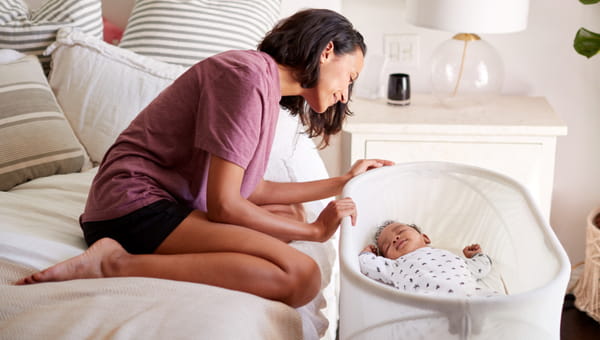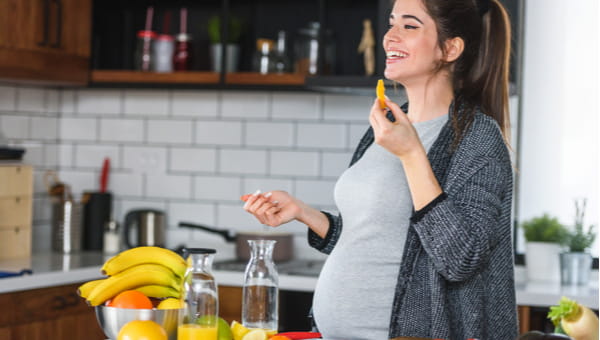Safe Sleep
The rate of deaths due to sudden infant death syndrome, or SIDS, has dropped by 70 percent in the last 25 years or so. Experts believe thousands of babies’ lives have been saved because of new knowledge about safe sleep. Here’s how to best protect your little one while he or she is sleeping.
Back to sleep
Babies up to one year of age should always be put on their backs to sleep, whether it’s at night or during daytime naps. This includes babies who have reflux, because their airways and gag reflexes are designed to keep them from choking while on their backs. Babies who are placed on their sides or stomachs are much more likely to die of SIDS. However, once your baby is able to roll from back to tummy (and the other way, too), there’s no reason to roll them back over onto their backs while they’re sleeping.
Bed safety
Your baby’s bed, whether it’s a crib, a bassinet or a cradle, should have a firm mattress that fits tightly against the sides and ends of the bed. Only use a fitted sheet that fits tightly—no top sheet or blanket, no crib bumper, and no pillows or stuffed animals should be in the bed with them. Never lay your baby down to sleep on a couch or chair, and only bring your baby into your own bed for feeding or snuggling. If you think you might accidentally fall asleep while your baby is in bed with you, make sure there are no pillows, sheets or blankets that could cover baby’s face.
Room sharing
Ideally, your baby’s bed should be in your bedroom for at least the first six months, and up to a year. Keep it close to your bed if you can, which will allow you to reach over and touch your baby as needed.
For more information about infant safe sleeping, listen to our podcast.

What You Need to Know About Infant Safe Sleeping and Co-Sleeping
Since the American Academy of Pediatrics (AAP) recommended all babies should be placed on their backs to sleep in 1992, deaths from Sudden Infant Death Syndrome have declined dramatically. But sleep-related deaths from other causes, including suffocation, entrapment and asphyxia, have increased.Sleep needs for babies vary depending on their age. Even though you may think it will be easier for feedings or to get up in the middle of the night if your baby is co-sleeping with you, the AAP strongly believes in sharing your room and not your bed. Putting your baby in bed with you may raise the risk of strangulation, suffocation, entrapment, and SIDS. Monica Kharbanda, MD, discusses the potential dangers of co-sleeping, why you should put your baby to sleep on their backs, and the latest recommendations from the American Academy of Pediatrics.Learn more about BayCare’s children’s health services.This podcast is for informational purposes only, and is not intended to be a substitute for professional medical advice, diagnosis, or treatment. This podcast does not create a physician-patient relationship. You should always consult your physician or other healthcare professional with any questions you may have regarding a medical condition. If you think you may have a medical emergency, call your physician or 911 immediately.




